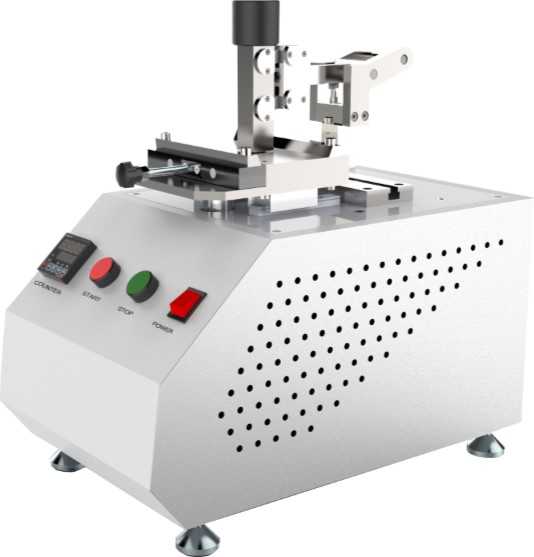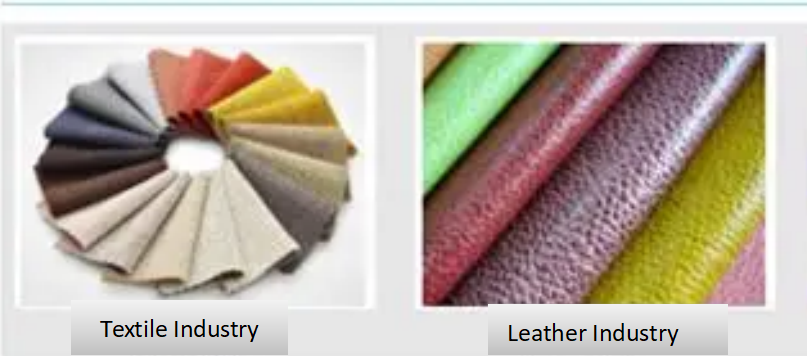Leather Crockmeter: Principles, Applications, and Purchasing Guide
This article details the working principles, testing standards, operating procedures, and key considerations for purchasing a leather crockmeter. This instrument simulates everyday friction conditions to evaluate the colorfastness of leather products, making it crucial for quality control. It also analyzes common problems and solutions, and foresees future development trends, providing practical reference for industry professionals.
Introduction
Colorfastness is a crucial quality indicator in the production and use of leather products. Whether it's high-end leather shoes, bags, or car seats, the ability of the leather surface's color to withstand the test of daily friction directly impacts the product's aesthetics and longevity. As specialized equipment specifically designed to assess this performance, the leather crockmeter has become an indispensable testing tool for leather manufacturers, quality inspection agencies, and R&D centers. This article comprehensively explains the instrument's technical principles, application scenarios, and key considerations for purchasing, helping readers gain a deeper understanding of its importance and proper usage.

Working Principle
The leather crockmeter evaluates color retention by simulating the various frictional forces to which leather surfaces may be subjected in everyday use. The instrument's core components include a friction head, a sample holder, and a motion control system. The friction head typically utilizes standardized white wool felt or cotton cloth, applying a reciprocating or rotational friction motion against the surface of the leather sample under a specified pressure. During the test, the instrument precisely controls parameters such as the number of friction strokes, pressure, and speed to ensure consistent and repeatable testing conditions.
After the test, the degree of color transfer from the friction material is assessed using a colorimeter or colorimeter to determine the leather's color fastness grade. This mechanical simulation test quickly and objectively reflects the color stability of leather products in actual use, providing reliable data for product quality control. Modern, high-end models are also equipped with digital control systems and automated evaluation software, further improving testing efficiency and accuracy.
Main Test Standards and Methods
Internationally accepted standards for leather color fastness testing include ISO 11640. SATRA TM31. and IUF 450. ISO 11640. developed by the International Organization for Standardization, specifies both dry and wet friction testing conditions. During the test, a standard white rubbing cloth is fixed to the rubbing head and rubbed back and forth with a pressure of 5N, typically 20 times. SATRA TM31 focuses more on testing footwear materials, while IUF 450 is the standard of the International Association of Leather Technologists and Chemists.
The test methods are mainly divided into dry and wet rubbing methods. The dry rubbing test uses a dry standard rubbing cloth to simulate everyday dry friction conditions. The wet rubbing test uses a cloth soaked in distilled water and wrung to a specified moisture content to simulate colorfastness under humid conditions or liquid contact. Test results are rated on a scale of 1 to 5. with higher grades indicating better colorfastness. Grade 5 indicates almost no color transfer, while grade 1 indicates severe color fading. A professional test report should include complete information, including the test standard, method, conditions, results, and evaluation basis.

Instrument Operation Procedure and Precautions
When using a leather rubbing colorfastness tester, first prepare the specimen and rubbing cloth according to the standard requirements. The specimen should be cut from a representative area of the leather, meeting the specified dimensions and possessing a smooth, wrinkle-free surface. Secure the specimen to the test platform, ensuring it is tight and free of looseness. For dry friction testing, directly attach a dry friction cloth. For wet friction testing, first wet the cloth and wring it to the specified moisture content (usually 95-100%).
Set the test parameters, including the number of frictions (usually 20), the friction speed (approximately 1Hz), and the pressure (usually 5N). Start the instrument and test. After completion, remove the friction cloth and compare the staining level against a gray scale in a standard light booth. The evaluation should be performed independently by at least two trained operators, and the average result should be used as the final result.
Operating precautions include: the instrument should be placed on a stable surface to avoid vibration interference; the pressure system and travel range should be calibrated regularly; the friction cloth must meet standard requirements and cannot be reused; the testing environment should maintain a standard temperature and humidity (usually 20±2°C, 65±2%RH); different color areas should be tested separately and recorded; and the instrument should be cleaned promptly after testing, especially after wet friction testing to prevent rust.
Key Considerations and Technical Parameter Analysis
When selecting a leather crockmeter, first consider testing requirements and standards compliance. Different industries and applications may require compliance with specific standards. For example, the footwear industry may prioritize SATRA standards, while automotive interior suppliers may prioritize ISO methods. Key parameters include: friction mode (reciprocating or rotary), maximum pressure (typically adjustable from 5-10N), friction travel (typically 60-100mm), counting range (typically 0-999 counts), and speed control (approximately 1Hz).
The instrument should be sturdy and durable, with smooth, shake-free movement of the friction head and uniform and accurate pressure application. High-quality models typically utilize precision linear guides and servo control systems to ensure consistent testing. Additional features such as touchscreen operation, multi-program storage, and automatic report generation can enhance efficiency. Regarding price, basic domestic instruments range from approximately 20.000 to 50.000 yuan, while high-end imported models can cost over 100.000 yuan. This consideration should be considered based on budget and long-term needs.
After-sales service is equally important, including installation training, regular calibration, and repair response. It's recommended to choose a supplier with a professional technical team and a sufficient inventory of spare parts. For multi-standard testing needs, consider modular designs that allow you to meet different standards by replacing accessories.
Applications and Importance
Leather crockmeters are widely used across various industries. In footwear manufacturing, they are used to test the color fastness of leather shoe uppers, linings, and other parts to ensure they don't stain socks or skin during wear. The leather goods and luggage industry focuses on the color fastness of frequently touched areas like handles and straps. The automotive interior industry places extremely high demands on the color fastness of leather components like seats and steering wheels, as sunlight and frequent friction accelerate color change.
The furniture industry uses them to assess the durability of leather furniture like sofas and chairs, especially light-colored leathers, which are more susceptible to staining. The apparel industry tests leather jackets and pants to ensure color stability during washing and wearing. These tests are not only important for product aesthetics but also for safety and health. For example, some dyes can transfer to skin through friction and cause allergies.
Through scientific color fastness testing, companies can select suitable leather materials and dyeing and finishing processes during the product development phase, monitor quality stability during production, and conduct final inspections before shipment to avoid customer complaints. Test data also serves as a crucial basis for resolving quality disputes and meeting regulatory requirements. With increasing consumer awareness of quality and increasingly stringent environmental regulations, the importance of leather color fastness testing will only grow.

Common Problems and Solutions
In actual testing, common problems include poor repeatability, uneven staining of the rubbing cloth, and unusual instrument noise. Wide variations in results may be due to improper sample preparation (such as inconsistent sampling positions or uneven surfaces), loose installation of the rubbing cloth, or misaligned pressure systems. Solutions include standardizing sampling procedures, regularly calibrating instrument pressure, and ensuring the rubbing cloth is installed flatly and tightly.
Uneven staining of the rubbing cloth may be caused by uneven coating on the leather surface or unstable movement of the rubbing head. It is recommended to inspect the leather surface before testing and clean it if necessary. Regularly maintain the moving parts of the instrument and keep the guide rails clean and lubricated. Unusual instrument noise often indicates wear or looseness of mechanical components. The machine should be shut down for inspection and, if necessary, replacement of worn parts.
Other common issues include excessive drying of the rubbing cloth after the wet friction test (the wringing should be controlled), non-standard lighting during evaluation (a standard light box must be used), and significant discrepancies in ratings between operators (strengthening training to ensure consistent standards is essential). Establishing comprehensive standardized operating procedures and a quality control system is key to ensuring reliable test results.
Maintenance and Calibration
To ensure accurate and reliable test results, the leather crockmeter requires regular maintenance and calibration. Routine maintenance includes: cleaning the instrument surface, especially the friction area, after each use; promptly wiping dry after wet friction testing to prevent corrosion; regularly checking for loose screws and nuts; and adding an appropriate amount of lubricant to moving parts monthly.
Key calibration items include: pressure system calibration (quarterly or semi-annually, using a standard dynamometer for verification); friction travel calibration (checking whether the friction head travels the same distance as the set value); counter accuracy verification; and speed consistency checks. Calibration should be performed in accordance with national metrology standards or the instrument manual, and complete calibration data should be recorded. Any deviation outside the allowable range should be promptly adjusted or repaired.
When not in use for an extended period, the instrument should be cleaned, oiled with anti-rust oil, and stored in a dry environment covered with a dust cover. A comprehensive inspection and calibration are required before re-use. It is recommended to maintain records of instrument usage, maintenance, and calibration to facilitate tracking of instrument status and test data traceability.
As a key instrument for assessing leather product quality, the scientific use of a leather crockmeter is crucial for ensuring product durability and safety. By understanding the instrument's principles, mastering standard methods, and standardizing operating procedures, companies can obtain reliable test data to guide product development and improvement. With technological advancements and rising industry standards, investing in advanced colorfastness testing equipment and technical training will become a wise choice for leather-related companies.
Properly understanding and prioritizing colorfastness testing not only helps enhance product quality competitiveness but also demonstrates a commitment to consumer responsibility, earning market trust and long-term development advantages for companies.
2025-09-19 10:24
- Related News
Working Principle and Standards of the Martindale Abrasion Tester
Leather Crockmeter: Principles, Applications, and Purchasing Guide
Technical Principles and Applications of Textile Air Permeability Testers
Gravel Impact Tester Test Content and Principle
360 degree water tank cleaner machine
Tile Abrasion Tester Operating Guide
STD-PH Series High Pressure Gas Sorption Analyzer
